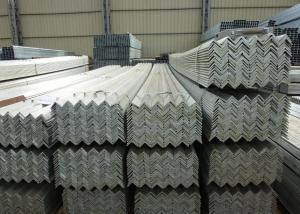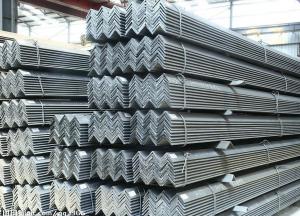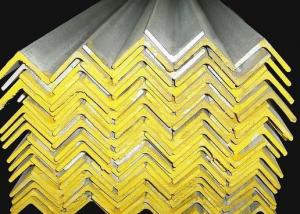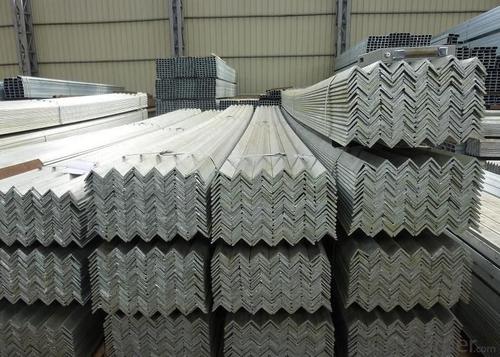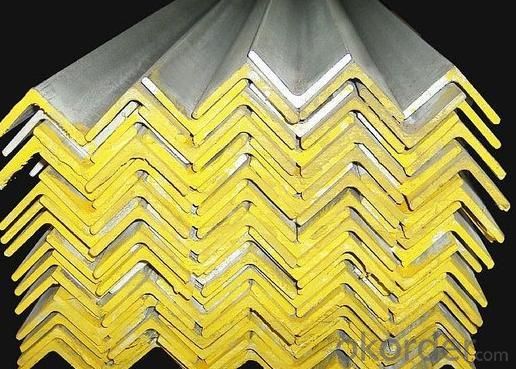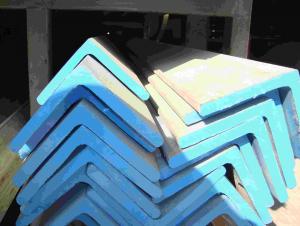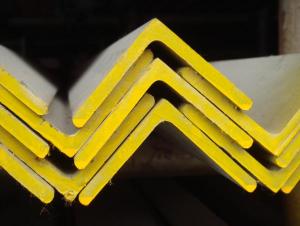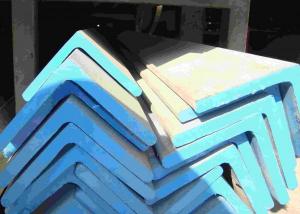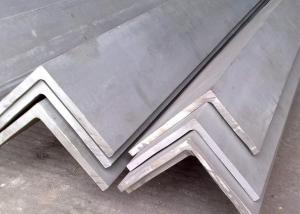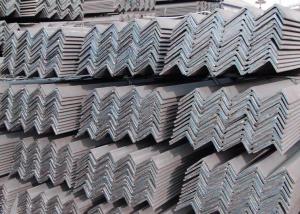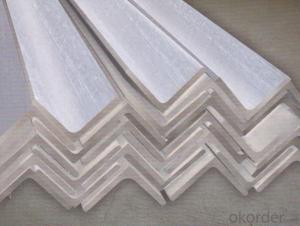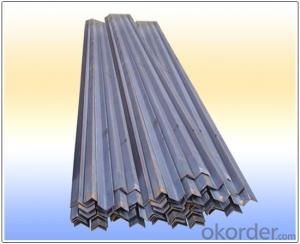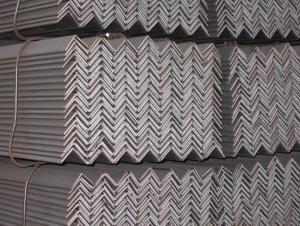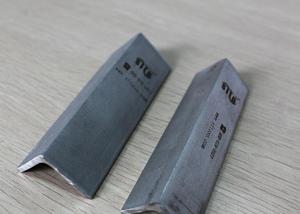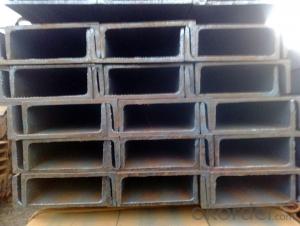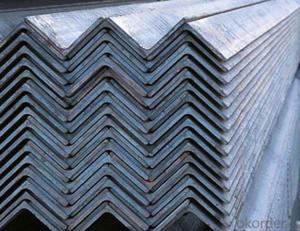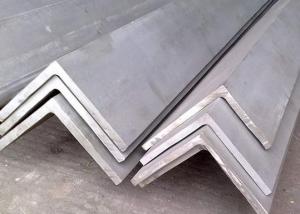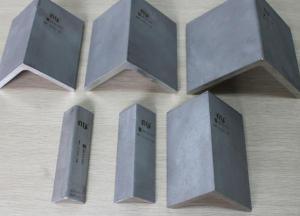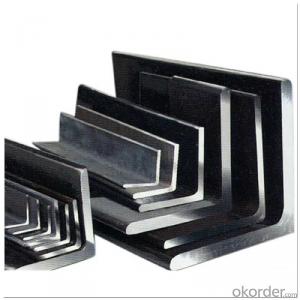Best Quality for 304 Equal Stainless Steel Angles
- Loading Port:
- China Main Port
- Payment Terms:
- TT or LC
- Min Order Qty:
- 5 Tons m.t.
- Supply Capability:
- 1000 Tons Per Month m.t./month
OKorder Service Pledge
OKorder Financial Service
You Might Also Like
Stainless Steel Angles
General Information of Stainless Steel Angles
1. Grade: SS200, 300,400 series
2. Size: 25×25×3 mm-100×100×10mm
3. Process: HRAP
4. Length: 2-6m
5. Shape: Equal
6. Delivery: within 20 days
7. MOQ: 1 ton
8. Certificate: ISO 9001:2008, SGS
9. Package: Standard Export Packing, or put into wooden boxes according to your requirement
10. Application: Construction, Marine, Industry and so on
Specification of Stainless Steel Angles
Name | Stainless Steel Angles | |||||
Standard | ASTM A554, A312, A249, A269 and A270 | |||||
Material Grade | 304,316,201,202, 316L,430 | |||||
Length | 6m or as customers' request | |||||
Tolerance | a) Thickness: +/-0. 15mm | |||||
b) Length: +/-4. 5mm - 0mm | ||||||
Surface | 180G, 320G, 400G Satin / Hairline(Matt Finish, Brush, Dull Finish) 400G, 500G, 600G or 800G Mirror finish | |||||
Application | Decoration construction, upholstery, industry instruments | |||||
Test | Squash test, Extended test, Water pressure test, Crystal rot test, Heat treatment, NDT | |||||
Chemical Composition of Material | Composition Material | 201 | 202 | 304 | 316L | 430 |
C | ≤0.15 | ≤0.15 | ≤0.08 | ≤0.08 | ≤0.12 | |
Si | ≤1.00 | ≤1.00 | ≤1.00 | ≤1.00 | ≤1.00 | |
Mn | 5.5-7.5 | 7.5-10 | ≤2.00 | ≤2.00 | ≤1.00 | |
P | ≤0.06 | ≤0.06 | ≤0.045 | ≤0.045 | ≤0.040 | |
S | ≤0.03 | ≤0.03 | ≤0.030 | ≤0.030 | ≤0.030 | |
Cr | 16-18 | 17-19 | 18-20 | 16-18 | 16-18 | |
Ni | 3.5-5.5 | 4-6 | 8-10.5 | 10-14 | ||
Mo | 2.0-3.0 | |||||
Mechanical Property | Material Item | 201 | 202 | 304 | 316L | |
Tensile Strength | ≥535 | ≥520 | ≥520 | ≥520 | ||
Yield Strength | ≥245 | ≥205 | ≥205 | ≥205 | ||
Extension | ≥30% | ≥30% | ≥35% | ≥35% | ||
Hardness (HV) | <253 | <253 | <200 | <200 | ||
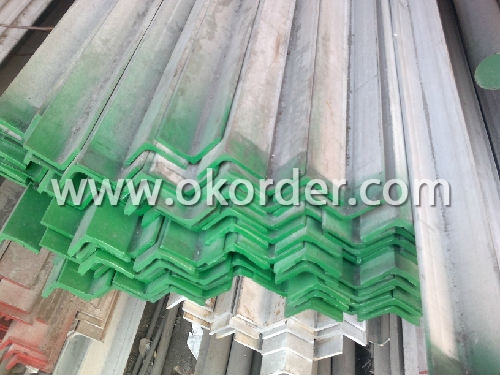
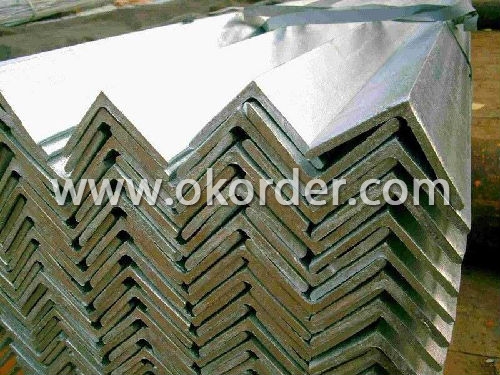
- Q: Are stainless steel angles suitable for the production of public seating?
- Yes, stainless steel angles are suitable for the production of public seating. Stainless steel is a durable and corrosion-resistant material that can withstand heavy use in public spaces. Its strength and stability make it ideal for constructing seating structures that can withstand the weight and movement of users. Additionally, stainless steel's sleek and modern appearance can enhance the overall aesthetics of public seating designs.
- Q: Are stainless steel angles resistant to stress corrosion cracking?
- Yes, stainless steel angles are generally resistant to stress corrosion cracking. Stainless steel is known for its excellent corrosion resistance, and this property extends to stainless steel angles as well. Stress corrosion cracking is a form of corrosion that occurs under the combined influence of tensile stress and a corrosive environment. Stainless steel angles are made from alloys that contain various levels of chromium, which forms a protective oxide layer on the surface of the metal and enhances its resistance to corrosion, including stress corrosion cracking. However, it is important to note that the resistance to stress corrosion cracking may vary depending on the specific grade of stainless steel used, the environmental conditions, and the level of stress applied. It is advisable to consult the manufacturer's specifications or a corrosion expert to ensure the suitability of stainless steel angles for a specific application.
- Q: Can stainless steel angles be used in the construction of handrails?
- Indeed, the utilization of stainless steel angles is possible in the construction of handrails. The enduring nature, resistance to corrosion, and pleasing visual qualities of stainless steel render it a favored option for handrails. The malleability of stainless steel angles allows for effortless customization to achieve the desired dimensions and contour for handrails. Furthermore, they offer structural reinforcement and stability, rendering them suitable for employment in both interior and exterior scenarios. Moreover, the maintenance and cleanliness of stainless steel angles are easily manageable, guaranteeing the handrail's longevity.
- Q: What are stainless steel angles?
- Stainless steel angles, which are metal bars shaped like the letter L and made from stainless steel, are frequently employed in construction, manufacturing, and engineering fields. This is due to their remarkable endurance, ability to resist corrosion, and overall strength. Stainless steel angles possess a superior resistance to rust, staining, and oxidation, rendering them suitable for use in outdoor and highly moist conditions. They are available in a variety of sizes and thicknesses, allowing for customization in structural support, framing, bracing, and decorative applications. The versatility and dependability of stainless steel angles make them a favored selection in industries that prioritize durability, longevity, and aesthetic appeal.
- Q: How does stainless steel angle compare to other materials like aluminum or carbon steel?
- Stainless steel angle has several advantages over other materials like aluminum or carbon steel. Firstly, stainless steel is highly resistant to corrosion and rust, making it suitable for various applications in moist or corrosive environments. Secondly, stainless steel angle offers excellent strength and durability, making it a reliable choice for structural purposes. Additionally, stainless steel has a high temperature resistance, allowing it to withstand extreme heat or cold. On the other hand, aluminum is lightweight but lacks the strength and corrosion resistance of stainless steel. Carbon steel, while strong, is prone to rust and requires regular maintenance. Overall, stainless steel angle provides a superior combination of strength, corrosion resistance, and durability compared to aluminum or carbon steel.
- Q: Can stainless steel angles be recycled?
- Yes, stainless steel angles can be recycled. Stainless steel is a highly recyclable material, and the angles can be melted down and reused to create new stainless steel products.
- Q: Can stainless steel angles be used in chemical processing plants?
- Yes, stainless steel angles can be used in chemical processing plants. Stainless steel is a versatile and corrosion-resistant material that is highly suitable for use in such environments. It offers excellent resistance to a wide range of chemicals, including acids, alkalis, and corrosive gases. Stainless steel angles are commonly used in chemical processing plants for various applications, such as supporting equipment, constructing platforms and walkways, and forming structural components. The high strength and durability of stainless steel angles make them a reliable choice for withstanding the harsh conditions and corrosive substances found in chemical processing plants. Additionally, stainless steel is easy to clean and maintain, ensuring the integrity and longevity of the equipment and structures.
- Q: What is the resistance to fatigue of stainless steel angles?
- Stainless steel angles are widely known for their high resistance to fatigue. Their exceptional strength, durability, and corrosion resistance make them an ideal choice for various applications. Even when subjected to cyclic loading or repetitive stress, stainless steel angles can endure fatigue and maintain their structural integrity over time. Several factors contribute to the fatigue resistance of stainless steel angles. One key factor is the high percentage of chromium in stainless steel, which forms a protective oxide layer on the surface. This layer effectively prevents cracks from forming and spreading, reducing the risk of fatigue failure. In addition, specific heat treatment processes like annealing or cold working are often used during the manufacturing of stainless steel angles. These processes enhance the mechanical properties of the angles, increasing their strength, hardness, and fatigue resistance. It's worth noting that the fatigue resistance of stainless steel angles may vary depending on the grade of stainless steel used, as well as the design and manufacturing techniques employed. To ensure the appropriate selection and application of stainless steel angles for specific fatigue requirements, it is advisable to consult relevant material specifications, industry standards, and engineering guidelines.
- Q: Can stainless steel angles be used in the production of chemical processing equipment?
- Indeed, the utilization of stainless steel angles is feasible in the manufacturing of chemical processing equipment. The preference for stainless steel in chemical processing equipment arises from its exceptional resistance to corrosion, robustness, and capacity to endure elevated temperatures and pressures. The distinct L-shaped configuration of stainless steel angles permits them to offer structural support and stability to diverse constituents of chemical processing equipment, including tanks, reactors, and piping systems. These angles can be affixed to the equipment through welding, bolting, or alternative fastening methods to guarantee the overall integrity and strength of the apparatus. Furthermore, stainless steel angles can be effortlessly cleaned and maintained, rendering them suitable for chemical industry applications that necessitate frequent sanitation and hygiene.
- Q: How do you clean and maintain stainless steel angle?
- To clean and maintain stainless steel angle, start by wiping it down with a soft cloth dampened with warm water and mild detergent. Avoid using abrasive cleaners or scrub brushes, as they can scratch the surface. For tougher stains or fingerprints, you can use a stainless steel cleaner or a mixture of vinegar and water. After cleaning, dry the surface thoroughly to prevent water spots or streaks. Regularly dusting and wiping down the stainless steel angle will help maintain its shine and prevent accumulation of dirt or grime.
1. Manufacturer Overview
| Location | Jiangsu, China |
| Year Established | 2010 |
| Annual Output Value | above US$3 million |
| Main Markets | East Asia, Middle East. |
| Company Certifications |
2. Manufacturer Certificates
| a) Certification Name | |
| Range | |
| Reference | |
| Validity Period |
3. Manufacturer Capability
| a) Trade Capacity | |
| Nearest Port | Shanghai |
| Export Percentage | 50% |
| No.of Employees in Trade Department | above 10 people |
| Language Spoken: | English, Chinese |
| b) Factory Information | |
| Factory Size: | about 50000 square meter |
| No. of Production Lines | above 3 |
| Contract Manufacturing | OEM Service Offered |
| Product Price Range | Average |
Send your message to us
Best Quality for 304 Equal Stainless Steel Angles
- Loading Port:
- China Main Port
- Payment Terms:
- TT or LC
- Min Order Qty:
- 5 Tons m.t.
- Supply Capability:
- 1000 Tons Per Month m.t./month
OKorder Service Pledge
OKorder Financial Service
Similar products
Hot products
Hot Searches
Related keywords
